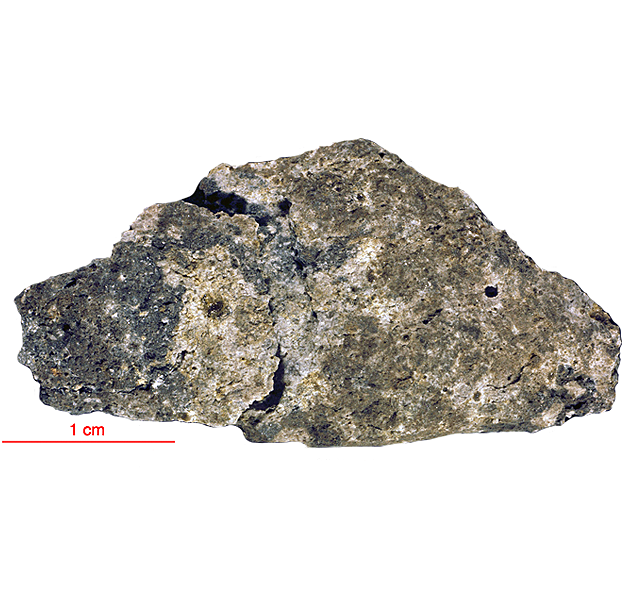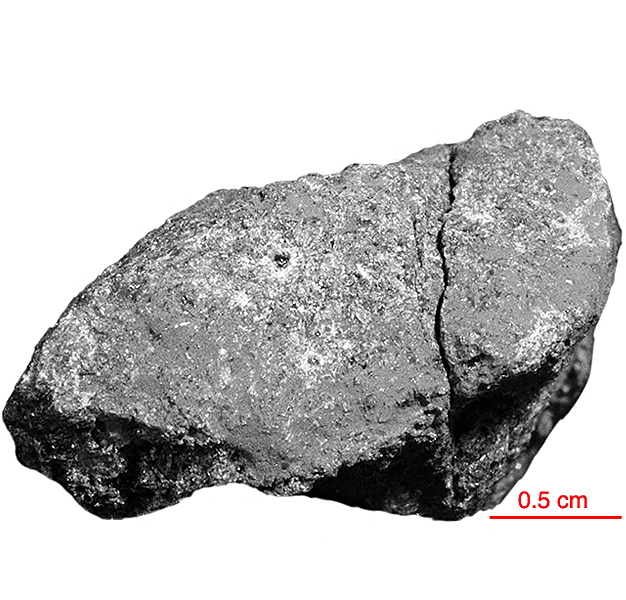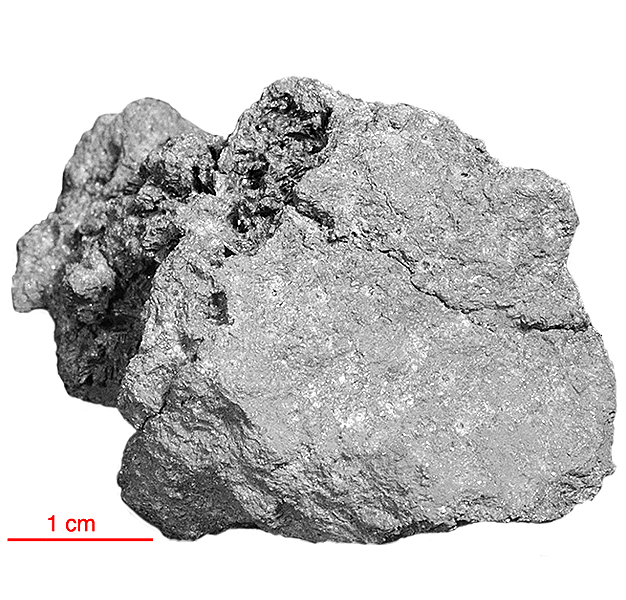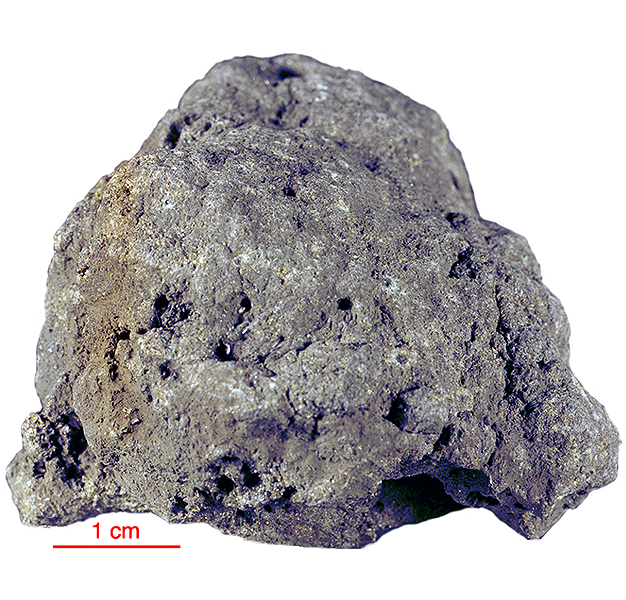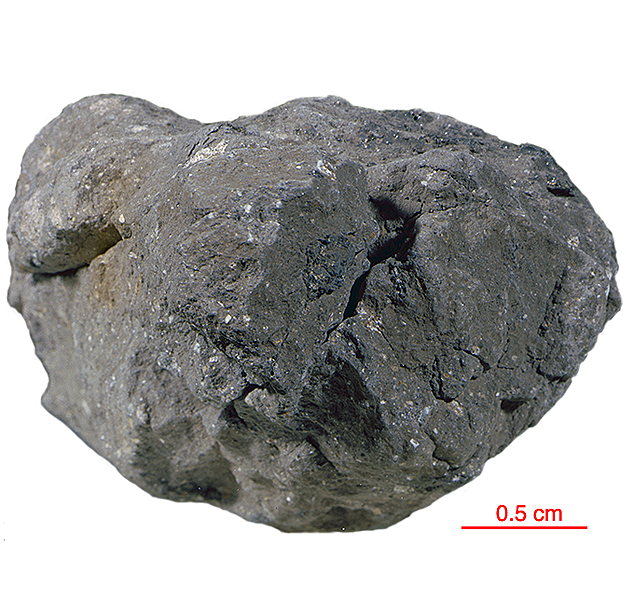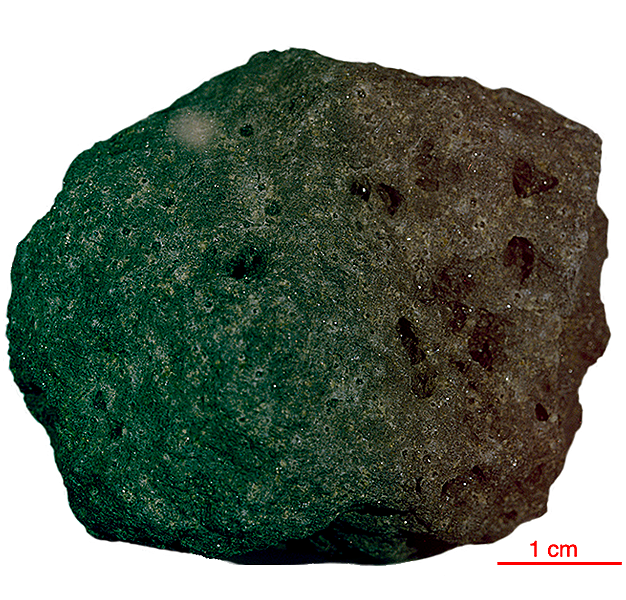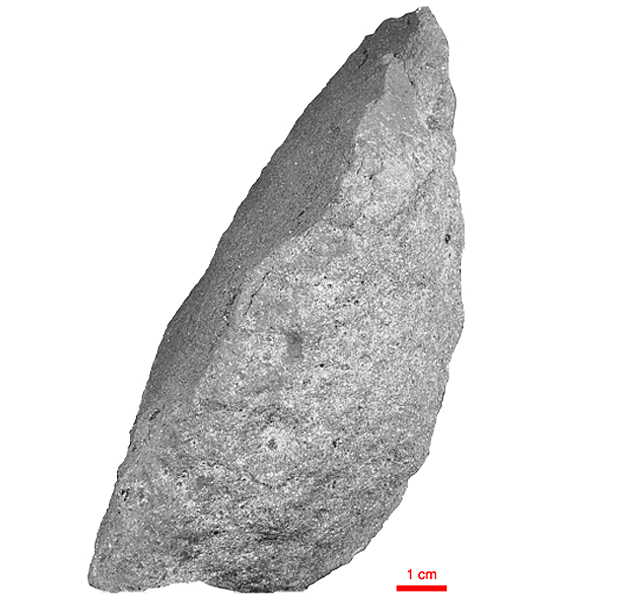
Fact sheet
12051 is a medium-grained porphyritic basalt characterized by subhedral to anhedral phenocrysts of pyroxene (up to 10 mm) set in a subophitic matrix consisting of plagioclase laths (0.02-1 mm) and rare plagioclase anhedra (0.2 to 0.3 mm) intergrown with equant pyroxene crystals (0.2 to 1 mm) and rounded laths of ilmenite (0.3 to 1 mm). Ilmenite laths commonly cut across the silicates. Mesostasis includes glass, troilite, metallic iron, cristobalite and trace tranquillityite. The medium-grained equigranular texture consisting of lath-shaped plagioclase intergrown with equant to slightly elongate pyroxene is suggestive of coetectic crystallization of a homogeneous lava. No olivine phenocrysts have been reported. Elongate ilmenite and small segregations of “symplectoid mesostasis” are common features. Residual glass with high silica and high potassium is found interstitially and is associated with K-feldspar, fluorapatite, whitlockite and baddeleyite.
The sample weighed 1660 grams before analysis and is 3.15 to 3.5 billion years old (Rb-Sr and Ar/Ar).
Further details of this and other Apollo samples are here: http://curator.jsc.nasa.gov/lunar/
Apollo 12 returned 34 kilograms of samples, including 45 rocks, samples of lunar 'soil', and several core tubes that included material from as much as 40 centimetres below the lunar surface.
Apollo 12 rocks were almost all basalts, with only two breccias in the returned samples. The basalts at the Apollo 12 site formed 3.1 to 3.3 billion years ago, roughly 500 million years later than the Apollo 11 basalts. Overall, there is much less of the element titanium in the Apollo 12 samples than in the Apollo 11 samples, which explains the more reddish colour of this region. The differences in age and chemical composition between the Apollo 11 and Apollo 12 samples demonstrate that mare volcanism did not occur as a single, Moon-wide melting event.
Apollo 12 was launched on 14 November 1969.

